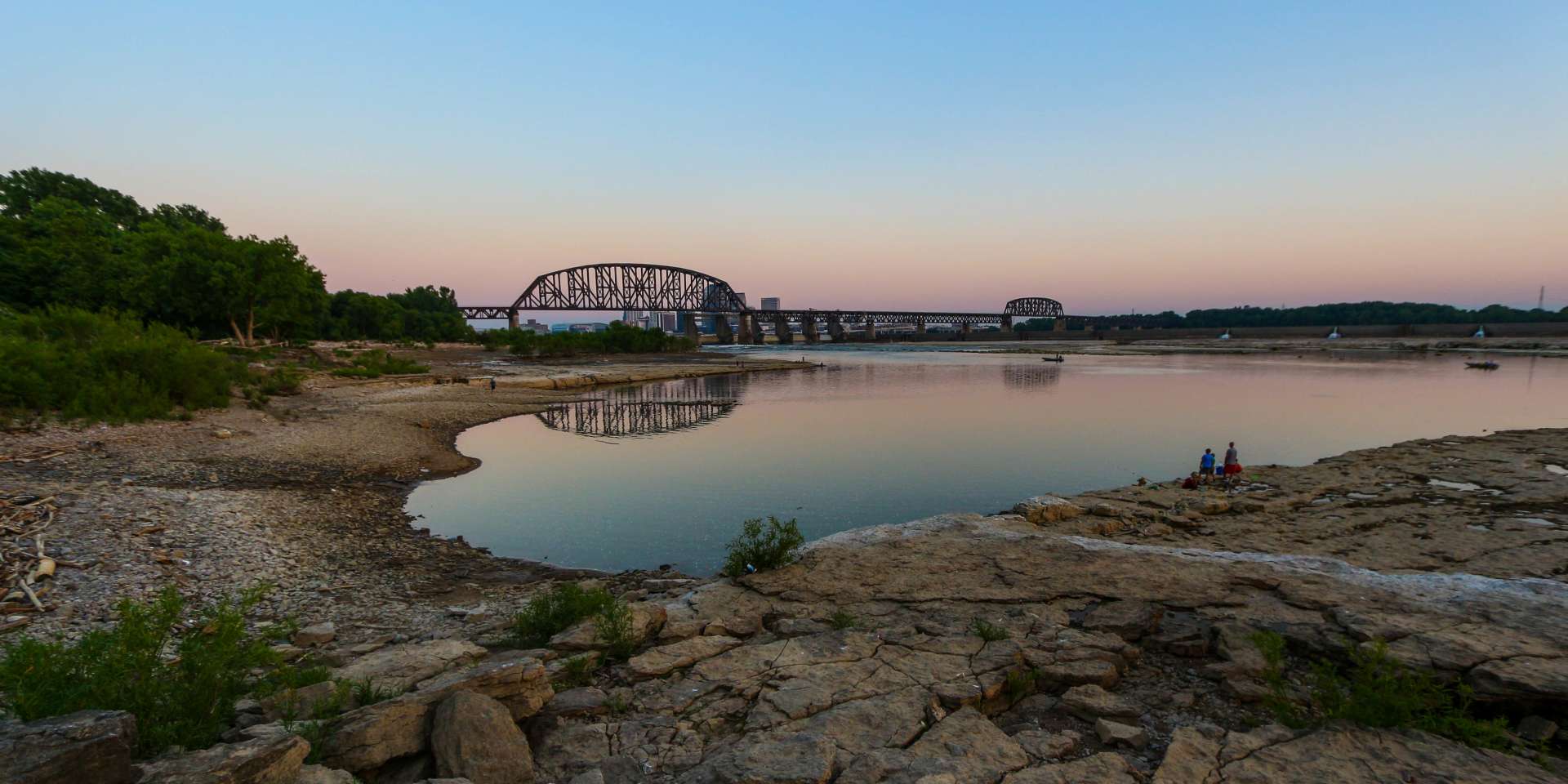Falls of the Ohio State Park
The Falls of the Ohio State Park is a true one-of-a-kind attraction. It is home to the largest exposed Devonian fossil beds in the world (Devonian is before dinosaurs). These fossilized sea creatures lived millions of years ago when this area was actually the floor of a shallow tropical sea. It is like no other place in the world.
Located along the Ohio River in Clarksville, Ind., the fossil bed is part of a 1,404-acre National Wildlife Conservation Area. The park also includes a state-of-the-art interpretive center. Sitting on a small bluff, the park overlooks the fossil beds and the river. It offers a panoramic view and brings to life the story of this place – 390 million years in the making.
In addition to the sheer natural wonder, the Falls of the Ohio offers a variety of outdoor recreational activities, along with a significant part in America’s history.

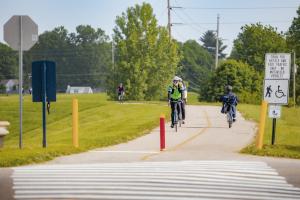
Outdoor Recreation
Hiking
Visitors can hike along the actual fossil beds, or they can hike the Woodland Loop Trail. The half-mile trail passes through two diverse habitats, the upper and lower woodlands. The lower part of the trail can be covered with driftwood and debris at various times of the year making hiking more difficult. Otherwise, the trail is a relatively level path with a few minor inclines. Pets are allowed but must remain on a 6-foot leash at all times.
Fishing
Fishing is allowed at the Falls of the Ohio on both the shoreline or from small boats in the river. All levels of fishers are welcome. An Indiana or Kentucky license is required. If fishing by boat, it can be put in the water at the George Rogers Clark’s Boat Ramp, just a short distance away at the George Rogers Clark Home Site. Boat access is not available right at the Falls of the Ohio. Bow fishing is illegal at the Falls, and keeping paddlefish caught at the Falls is also illegal.
Bird Watching
The Falls of the Ohio has a rich history as a popular bird-watching destination. John James Audubon frequented the area when he lived in Louisville in the early 1800s. It remains an ideal spot for today’s birders. Anything from bald eagles to peregrine falcons can be seen on any given day. For a more discerning eye, scoters, rare gulls, and terns can be spotted, along with a vast flock of various shorebirds.
Picnicking
Picnic tables and grills are scattered throughout the park. Pack a picnic and plan to spend the day by the water. Tables are first-come-first-use.
Ohio River Greenway
The Greenway is a paved 7.5-mile-long trail for walking or biking that runs along the banks of the Ohio River connecting Clarksville, Jeffersonville, and New Albany. This trail runs right by the Falls of the Ohio.
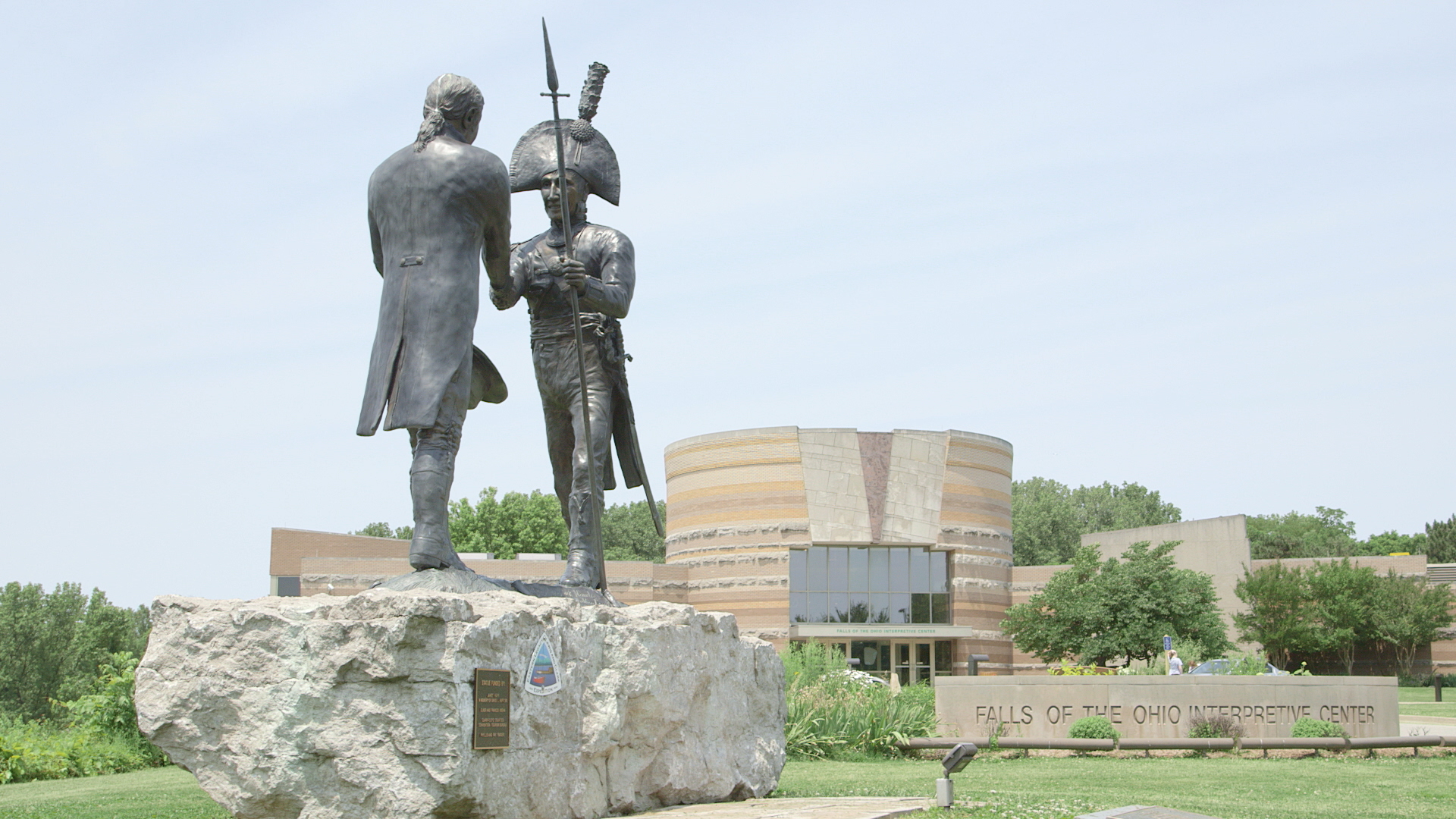
History
The Falls of the Ohio has a major place in American history that many people are not aware of. Revolutionary War hero George Rogers Clark, and his brother, William Clark, of the Lewis & Clark Exhibition, both have prominent ties to the area.
George Rogers Clark chose this area for his “retirement home.” The site, known for nearly 200 years as “Clark’s Point,” is located at the lower end of the Falls of the Ohio and has a commanding view of the Falls and river. Clark lived here from 1803 to 1809. Clark’s original cabin was destroyed in 1854. The McGee Cabin now sits on the 7-acre property and is modeled after a typical early 19th-century slave cabin. It helps tell the story of Venus and Ben McGee, the indentured servants of Clark.
The Clark home site is an integral part of the Lewis & Clark Expedition story. Meriwether Lewis met William Clark here before departing on their historic journey to the Pacific Coast. It was here that Lewis and Clark recruited the “nine young men from Kentucky” that formed the core of the Corps of Discovery that departed October 26, 1803.
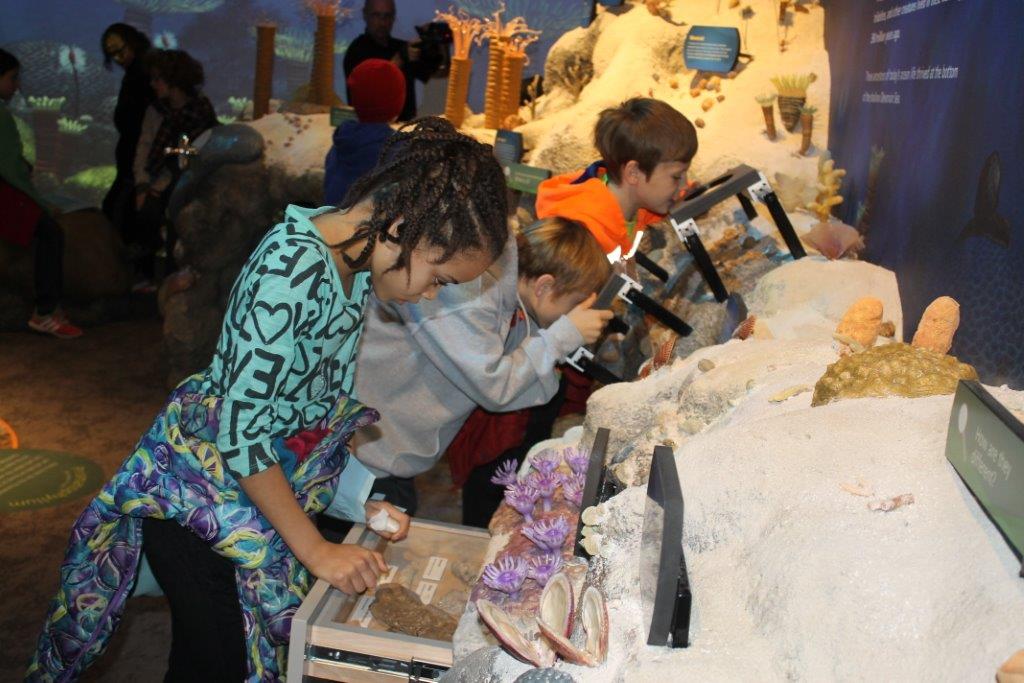

Interpretive Center
Built in 1994 and devoted to the natural and human history of the area, the Center is an architecturally intriguing structure that reflects the layers of history at the Falls of the Ohio. With a commanding view of the fossil beds and the Ohio River, the Center features 3,000 square feet of immersive exhibits, an auditorium, rotunda, classrooms, wildlife and river viewing rooms, and gift shop.
Renovated in 2016, the Center reopened with interactive and immersive exhibits that included four permanent exhibits: Ancient Sea, A Changing Land, Converging Cultures, The Falls Today; each one telling a different part of the narrative of what makes this area unique.
Ancient Sea tells of the 390 million-year-old shallow tropical sea that covered the area and the ancient creatures whose fossil remains can be seen in the beds today. A Changing Land takes you to Earth’s last major Ice Age and how it formed today’s Falls. This exhibit also allows a glimpse into the life of the native people who lived in the area the past 10,000 years. Converging Cultures tells the story of the land conflict and commingling of cultures among the indigenous Native Americans and European settlers who traveled here. The histories of George Rogers Clark and the Lewis & Clark Expedition are also chronicled. And finally, The Falls Today tells of the most recent natural and cultural history of the Falls.
The Falls of the Ohio is also part of the Ohio Valley Fossil Trail that links 12 museums and parks throughout Indiana, Kentucky, and Ohio, together. It gives visitors a trail of experiences that allows them to discover what makes the Ohio Valley one of America’s treasures in paleontology.

Parks & Trails
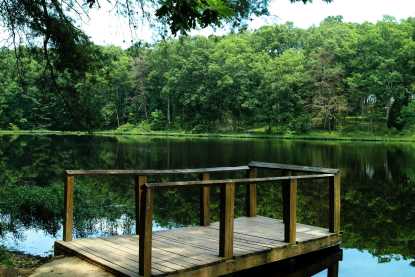
State Parks

Restaurants

Hotels

Things to Do



